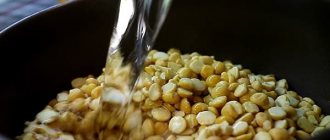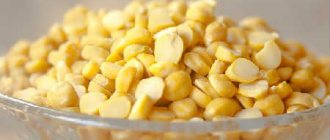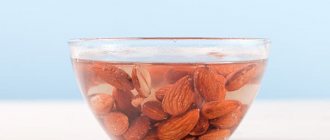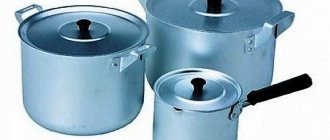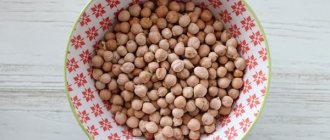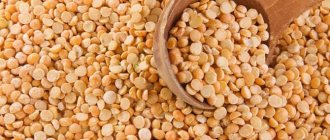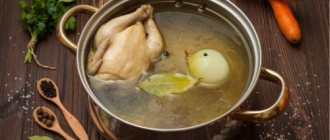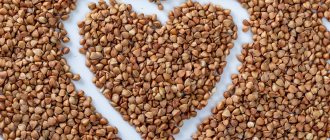Even a novice housewife knows that rice needs to be washed before cooking various dishes. An advanced level involves soaking different types of rice to improve the consistency of porridge or pilaf, increasing the nutritional value of the cereal and its taste. How to soak rice for pilaf and porridge, what features do steamed, red and brown varieties of cereal have? This knowledge will help housewives to significantly improve their culinary achievements.
Why soak rice in water?
Firstly, rice grains contain a lot of starch. This substance is a natural paste: have you noticed how grains in porridge stick together if you don’t wash them before cooking? This is exactly the task facing housewives who want to prepare a crumbly side dish or pilaf: to free the grains from starch as much as possible. And simply rinsing under running water is not always enough.
Secondly, cereals are known for their high levels of inhibitors. These components inhibit germination. Once in the human digestive tract, they bind essential minerals and block the release of gastric juice enzymes. All this significantly affects the quality of digestion.
Rice is one of the leading grains in terms of the content of such an inhibitor - phytic acid. The absolute record holder is the brown or brown variety. Brown rice grains are not peeled, they must be soaked before cooking.
How long does it take to cook rice?
Cooking time is determined by the type of rice: Long rice takes about 20 minutes to cook. Rarely sticks together. Medium rice may be a little sticky. The product is ideal for preparing porridge or pilaf due to its viscosity. It is recommended to pre-soak the grains for 20 minutes. Cooking time is 15 minutes. After turning off the heat, let the rice sit for 10 minutes. Round rice is ideal for sushi and rolls. Cook for about 20 minutes after the water boils. It is important not to remove the lid of the pan.
How to soak rice: all the rules
To get a sticky porridge, you can soak the rice for a short time. This will retain the small amount of starch needed to make the porridge sticky.
But for pilaf, starch is not needed at all. Before preparing this complex dish, be sure to soak any type of rice you choose. The easiest to prepare is steamed long-grain: it is cleared of almost everything and hardly sticks together even with a standard rinse in five waters. Does it need to be soaked? Still, yes, just try pouring water on a handful of grains. The liquid will become cloudy and taste unpleasant.
Is it possible to soak rice overnight?
Soaking rice in advance is the best solution for busy housewives. Soak the grains overnight, and by morning you will have grains completely ready for cooking.
What water should you soak rice in?
One of the most important points for preparing a crumbly side dish, and especially pilaf, is the correct choice of water temperature for soaking. The easiest way is to pour cold water over the rice, but it will take more time to completely remove starch and neutralize antinutrients.
The best option is hot water, about 60 degrees. What kind of water you shouldn't soak cereal in is boiling water. It will cause the grains to swell very quickly and unevenly.
The peculiarity of rice that has been kept in cold water is that during the final rinsing it becomes brittle. Do not rub the grains to prevent them from cracking. This can lead to excess viscosity, which we are trying so hard to get rid of.
Tip from Miss Clean magazine: After the warm water has cooled, change it to a new portion. This will make the pilaf even more crumbly, and the grains will be saturated with oil and spices.
Some housewives recommend soaking rice in salt water. The cereal will absorb as much salt as needed.
How long to soak rice for pilaf
How long does rice take to soak? Try to remember this at least a couple of hours in advance. The optimal time is 7-8 hours. But there are several varieties of cereals, and they have fundamental differences.
Do I need to soak parboiled rice?
The steamed type is the easiest for culinary experiments. How long will it take for these purified grains to become as fluffy as possible? The answer is from half an hour to two hours.
Red rice
Soak red rice for 3-5 hours. At the same time, do not forget that after the “water procedures” the time for cooking cereals is reduced by almost half.
Brown (brown) rice
Brown rice requires a special approach: if it is not soaked, it simply will not cook. The shells of the grains are very rough and contain many inhibitors. To prepare the brown variety, soak it for at least 8-12 hours.
Delicious recipe! Delicious fruit desserts
How to soak
How to properly soak cereals:
- Use only clean water.
- Soak in a glass container.
- Before the procedure, thoroughly rinse all the grains so that dust and dirt are removed with the water.
- Keep the container at room temperature.
- Rinse the rice one last time before cooking.
These are the simple rules for working with the most popular cereal. Let them help you make your porridges and crumbly dishes the most delicious.
Throughout the East, rice is a revered and beloved dish. Its main feature is that it does not become boring, no matter how often it is served to the table. What is this connected with? First of all, with the fact that several thousand agricultural varieties of rice are known.
What other way can you prepare pilaf?
To prepare rice today, you can use either a regular cast-iron cauldron, or a deep frying pan, a kettle or a regular saucepan (in the absence of other options). Also today, housewives often cook pilaf in multi- and double boilers. Do I need to soak rice for pilaf in a slow cooker? It is necessary if the recipe requires it and if there is time. Soaking the rice will release excess starch and make the dish more tender. Steamed rice can often be found on supermarket shelves. Many housewives do not know whether it is necessary to soak steamed rice for pilaf. However, its preparation does not require special skills. It, like many other types of rice, can be soaked or boiled immediately after washing.
You need to cook the basmati on low heat for 20-25 minutes without stirring. Do not remove the lid from the container in which rice is cooked. Otherwise, you may end up with a sticky mass instead of pilaf. When the cereal is completely cooked, you need to turn off the heat and stir the dish so that the grains appear tousled. This variety of rice, like many others, can be used to prepare a wide variety of dishes, recipes for which can easily be found on the Internet. You can also use your mother's or grandmother's recipes for rice dishes.
What is rice like?
The whole variety of rice varieties is divided into two branches:
- long, thin - Indian origin;
- short and roundish - of Japanese origin.
In this case, rice grains vary in color from white to black. There are yellow, red, beige, and purple varieties of rice, and almost each of them is also divided into sticky and non-sticky. All these varietal nuances are extremely important during its culinary processing.
Do I need to soak rice? Fry the rice raw or boil it immediately. What to cook in: water, milk, steam or a combination of different media. All these subtleties can practically baffle the average cook.
If it didn't work out
So, what you feared happened: it turned out to be tasty, but a porridge with meat. There is nothing that can be done to correct anything at this point. But you need to draw conclusions and not give up culinary experiments.
The rice in the pilaf may stick together, or, on the contrary, it may be dry.
Why does it turn out like porridge?
Pilaf turns into mush for several reasons. Rice grains lose their shape:
- More water than necessary. For example, rice was soaked longer than necessary or excess water was poured into the pilaf.
- The pilaf was overcooked.
- The rice was originally crushed. Or, when washing, long grain rice was broken by rubbing it between the palms.
- Poor quality washing of rice, and rice powder got into the pilaf.
- Starchy variety. Here, either refuse such rice or try to fry it before preparing pilaf.
- We disturbed the pilaf with a slotted spoon, and the cooked rice crumbs fell into the broth and thickened the pilaf.
- And often, the recipe is violated, the proportions and temperature conditions are not followed.
If you are unsure of your abilities, but want to cook pilaf, we recommend starting with steamed rice - it is difficult to make it sticky.
What is brown rice
The most popular of all rice varieties today can be called brown. It is worth noting that such a definition is not entirely correct.
After all, in fact, this is not the name for a separate variety of rice, but for its unprocessed, unpolished form.
The natural, slightly brownish shell gives the grains their characteristic color.
But the unpresentable appearance is more than compensated for by the beneficial properties of unpolished cereal.
Unprocessed grains contain fiber, a complex of vital minerals and vitamins.
How long does it take to cook rice in water?
There are different varieties of rice, so it is recommended to choose the cooking time based on the appearance of the grains. In addition, the variety determines the proportional relationship between water and grains. Long rice is cooked for about twenty minutes. For two glasses of grains, about four glasses of drinking water are consumed. Short (round) rice takes the same amount of time to cook – exactly twenty minutes. However, it is recommended to add less water. Two cups of grains require three and a half cups of liquid. Brown or wild rice takes quite a long time to cook - thirty to forty minutes. You need to regularly monitor the amount of water. And to prevent the liquid from accidentally boiling away, it is advisable to pour in more water. For two glasses of cereal, about five glasses of liquid are allocated.
The nutritional value
| Name | Contents per 100 grams | % of daily value |
| Calcium | 28 | 3 |
| Potassium | 115 | 2 |
| Magnesium | 25 | 7 |
| Phosphorus | 115 | 16 |
| Manganese | 1.09 | 52 |
| Zinc | 1.09 | 11 |
| Iron | 0.8 | 6 |
| Name | Contents per 100 grams | % of daily value |
| Thiamine (B1) | 0.07 | 6 |
| Riboflavin (B2) | 0.01 | 1 |
| Niacin (B3) | 1.62 | 11 |
| Pantothenic acid (B5) | 1.01 | 20 |
| Pyridoxine (B6) | 0.16 | 13 |
100g of brown rice contains 331Kcal. This represents 22% of the daily caloric intake for an adult.
Beneficial features
This composition makes brown rice a healthy dietary supplement. After all, it helps rid the body of toxins, lowers blood sugar levels, prevents inflammatory processes in the intestines, helps eliminate neuroses, and facilitates the functioning of the human circulatory system.
Therefore, brown rice is indispensable in the diet for the following diseases:
- salt deposits;
- diseases of the cardiovascular system;
- vitamin B1 deficiency;
- diabetes;
- inflammation of the gastrointestinal tract;
- eczema and dermatitis;
- problems with the nervous system.
Naturally, if you have any disease, you cannot refuse medical help, relying only on the properties of brown rice. With appropriate treatment, it will only help speed up the healing process.
But regular consumption of brown rice will help normalize all metabolic processes in the body. And this will not be slow to manifest itself in appearance.
It is not for nothing that brown rice is included in the secret arsenal of beauties with radiant skin and silky hair.
All these beneficial properties of brown rice during the grinding procedure disappear or are greatly reduced in its white, refined counterpart. In addition, white rice contains more carbohydrates than brown rice.
It can be argued that white rice tastes more tender and pleasant than brown rice, and that its appearance is more refined. That white rice can be cooked faster, easier and more varied than coarse, unpolished rice. No one is going to argue with this.
You just need to understand that these are two different products that need to be used independently of each other, without forgetting about the priorities of a healthy diet.
How much is needed, proportions
One of the secrets in properly preparing pilaf is a clear ratio of the proportions of ingredients and water. Determining how much rice you need is one of the secrets of delicious pilaf. A lot depends on your products, and no one can tell you the exact proportions. But there are established ratios of rice with water and with meat in pilaf that you can rely on. With experience, the recipe will change to suit your taste and the products you can buy for pilaf.
To the meat
In real Uzbek pilaf, everything is put in equal parts, that is, 1 kilogram of meat (with fat tail), 1 kilogram of chopped carrots and 1 kilogram of rice. For those who want a more “festive” option, add less rice: for 1 kilogram of meat, 600 grams of rice, no more.
Relation to water
A large amount of water in pilaf turns it into porridge, or even a thick soup. The total water needed for rice is 2:1. But you need to take into account the water that the rice took during soaking and the juices of zirvak. On average, for 4 servings of pilaf you need to take 3 cups of rice and 5 cups of water.
How much water to add
When choosing the proportions of water in pilaf, you need to take into account the type of rice and some features of the cereal. If you decide to use steamed rice that has been pre-soaked, then you need to pour water in a 1:1 ratio to rice. If steamed rice is added dry - 2:1. For short grain rice, use equal amount of water. With more quantity it will boil into mush. For brown varieties, you need to pour 3 parts of water to 1 part of the cereal. If using Basmati variety - 1 ⅔ parts water. For the Devzira variety, a ratio of 1:2 will be suitable. The most water is needed for the so-called wild rice, black varieties. For 1 part rice you will need 4 parts water. In addition, these varieties take the longest to soak: overnight.
Negative qualities
Excessive indulgence in any product can be harmful to health. So before you become a brown rice fan, there are a few things to consider.
Often, suppliers and manufacturers of brown rice, given the increased demand for this product, simply tint white rice.
To avoid disappointment when using such a product, you should not buy it from private sellers.
Large manufacturers treat rice with glucose and talc before transporting it, which can be harmful to health if consumed for a long time.
Delicious recipe! How to pickle whitefish at home deliciously
We should not forget that the amount of dangerous fertilizers in countries that practice industrial rice cultivation is very different from the standards familiar to Russians.
If you purchase a large batch of brown rice, then during long-term storage it can not only lose some of its beneficial properties, but also its nutritional value.
Therefore, a number of conditions must be met:
- store in small batches;
- maintain a cool temperature in the room where the product is stored;
- keep the rice in a well-closed ceramic or tin container;
- When storing, avoid high humidity, which can spoil the cereal.
Basic rules for cleansing the body with rice
Based on all of the above, the following basic rules for cleansing with rice at home can be identified:
- To eat boiled or half-cooked rice, you should take round or Italian rice.
- To prepare an infusion or kvass to remove salts, it is better to use unpolished rice.
- To achieve the cleansing effect during the rice diet, you should not consume foods containing salt, sugar, coffee, cocoa, and fats.
- To maintain normal body activity during a rice cleansing course, it is necessary to include fresh and stewed fruits and vegetables in the diet, as well as a sufficient amount of liquid.
- You should start the rice cleansing procedure only if there are no contraindications.
How to cook brown rice properly
- Cooking any rice, and brown rice in particular, begins with thoroughly washing it. Firstly, this is necessary in order to remove dust and dirt from the surface of the rice grains that got on them during cultivation and transportation. And secondly, to reduce the amount of substances used when processing rice. It is necessary to rinse the cereal in cold water until the water becomes clear. After washing, it is advisable to scald brown rice with boiling water. And then rinse with cold water again. Only after this can it be cooked.
- An important step in cooking brown rice is soaking. The washed rice is placed in a deep bowl and filled with plenty of cold water. In order not to waste too much precious time on this, it is better to soak the rice overnight. Another option would be fine. Rice soaked before leaving for work can be cooked for dinner. In general, soaking the cereal should take 5-6 hours.
- The prepared rice is transferred to a cooking bowl and poured with cold water at the rate of 1 cup of cereal to 2.5-3 cups of water, add a teaspoon of salt and bring to a boil. Cook the rice over high heat for 5-10 minutes with the lid tightly closed.
- After this, you need to reduce the heat and cook the rice for 30 minutes without opening the lid.
- At the end of cooking, turn off the fire, leave the lid tightly closed and keep the dish on the stove for at least another 10-15 minutes. This must be done so that the remaining water is absorbed into the rice. You can remove the pan from the stove, wrap it and put it in a warm place for the same time.
All that remains is to season the prepared brown rice in accordance with the main idea and begin the meal.
Pilaf in the oven
When preparing pilaf in the oven, it is recommended to soak the rice briefly, or better yet, steam it with boiling water. To do this, pour boiling water over the unwashed rice and leave for 5-10 minutes. After this, you need to drain the cloudy water and pour boiling water again for the same time. The water, as when cooking pilaf in a cauldron, should be drained only before placing the rice in the oven. When soaked in boiling water, rice does not crack, retains its shape and becomes softer and more tender.
When preparing pilaf in a “sleeve”, there is no need to soak the rice. The main thing is to rinse it well until the water is clear. You can pour a little meat broth into the rice sleeve, add fried meat with spices and vegetables and add plain water. With this method of cooking, the rice will absorb the taste of the oil and broth, but at the same time remain crumbly.
How to cook brown rice in a steamer and slow cooker
For those who prefer to modernize the cooking process, cooking rice using a steamer or multicooker is suitable.
These two methods have some differences, but the main thing remains the same - before storing, brown rice must be pre-washed and soaked.
To prepare a glass of rice, you need to take two glasses of water. Pour the prepared rice cereal into the cooking bowl included with the device and fill it with the measured volume of water.
After this, close the device with a lid and turn on for 30-35 minutes. Season the finished rice with oil, stir and add salt if necessary. After this, you can start eating.
To cook brown rice in a slow cooker, slightly change the proportions of water and cereal. Usually in this case, take one glass of water for one glass of rice.
Otherwise, you should follow the instructions and turn on the device in “rice” mode for 30-40 minutes. Oil, salt and other ingredients are added to rice after it is ready.
What else you need to know about preparation
After you have completed all the procedures for preparing the rice, you should properly place it in the cauldron. You shouldn’t pour it in a heap, otherwise there will be excess water. The cereal should be thoroughly compacted in the cauldron. In this state, the rice should be filled with two fingers of water.
Each variety of rice has its own ability to absorb moisture. Soft varieties will be saturated with moisture in half an hour, while hard varieties (such as basmati) need to be soaked for 2 hours. It absorbs warm liquid faster, which means that the amount of oil absorbed during cooking will be less, and the pilaf will turn out lighter. If you soak rice in water for a very long time, it will become very fragile and will cook prematurely. Therefore, when soaking, you should take into account the hardness of the grains and select the appropriate time.
You should also pay attention to what kind of water we soak the rice for the first time (the taste of the dish depends on this). Therefore, it should be soaked in warm, slightly salted water.
Calculating the amount of liquid is quite difficult, since it depends on many parameters. For example, zirvak also contains a certain amount of water. Therefore, you do not need to use all the water at once, but add it gradually during the cooking process, taking into account the condition of the rice.
Pilaf is a dish loved by many. And pilaf often fails because of rice. For pilaf to be a success, you need to understand how to choose grains for pilaf, how to process it, and how to cook it correctly together with zirvak.
Cooking tricks and tips
It must be remembered that cooking rice is a creative process. The times and proportions in the recipe are given for standard cereal.
The quality of the result can be affected by the ripeness of the rice, the variety, and the degree of boiling water. Therefore, it is worth practicing cooking rice, using one variety to begin with. And don’t be upset if the result is slightly different from what was planned.
Another nuance is the choice of a dish that includes rice.
As for spices, it is good to add cumin (or cumin), chili pepper, and turmeric to rice.
But it is best to choose ghee. In Indian culture it is considered the most beneficial.
Brown (aka brown) rice appeared in stores not long ago, but is becoming increasingly in demand among supporters of proper nutrition - this grain is healthier and more valuable than the usual white one. And those who encounter this product for the first time have a question: how much and how to cook brown rice correctly, so that neither the taste nor the benefits of this grain are affected.
When is rice cleansing contraindicated?
You cannot cleanse joints with rice (and the whole body) if you have such diseases as:
- any pathologies of the heart and blood vessels;
- cracks or intestinal obstruction;
- tendency to constipation;
- urolithiasis disease.
You should also not resort to cleansing the child’s body (under 13 years of age) - as a rule, at this age the body is capable of self-cleaning and does not need additional measures.
We should not forget that doctors’ reviews of such cleaning methods are filled with skepticism. Therefore, for those who trust traditional medicine more than the extravagant methods of healers like G. Malakhov, it is better to refrain from such experiments on their bodies.
In conclusion, we can add that the healing properties attributed to rice (when it is called almost a panacea for all ills) are somewhat exaggerated. Of course, it is impossible to get poisoned by eating rice every day, but you shouldn’t hope that rice will save you from all your ailments.
This cereal is a natural adsorbent - it cleanses the body of harmful accumulations, and also to some extent contributes to figure correction. Rice in the morning on an empty stomach for weight loss - today we will tell you about the rules of the procedure.
Efficiency of the procedure
How does cereal act on the human body? Rice grains, due to their porous structure, absorb waste, toxins, harmful salts, excess cholesterol, and also prevent the absorption of fats from food and help normalize metabolic processes.
special instructions
Please note: like other adsorbents, rice does not distinguish between beneficial and harmful elements. With regular consumption of this cereal, a deficiency of mineral elements occurs - first of all, this concerns potassium. Based on this, during the rice diet, foods containing potassium should be introduced into the diet - dried apricots, raisins, baked potatoes (you can also use special supplements).
For weight loss purposes, it is preferable to use brown (unpolished) rice. During weight loss and cleansing, you should follow a diet that excludes smoked foods, marinades, pickles, sweets, and fatty foods (it is advisable to switch to a vegetarian diet). When cooking rice, do not use salt, sugar, seasonings, or oil. The procedure should be performed infrequently - 1-2 times a year.
Composition, calorie content and features of brown rice
Brown and white rice are the same grain.
Delicious recipe! Beef with vegetables in tomato sauce
White is subjected to grinding, depriving the grain of the most valuable thing - the shell and the embryo.
For what? The secret is simple - the refined product lasts longer.
Brown has a shorter shelf life, its price is significantly higher, but the benefits for the body are much greater.
The shell of the brown cereal itself is fiber, which is important for intestinal function.
It contains a unique complex of amino acids, vitamins and microelements that are important for maintaining our health. Energy ratio of this product: 7:11:78 (used). The calorie content of brown rice in its raw form is lower than that of its white “brother” - 331 kcal. When cooked it will be no more than 100 kcal . That is why brown rice must be included in the list of products for all adherents of a healthy lifestyle when going to the store.
Useful qualities and contraindications
Brown rice is useful:
- for cardiovascular diseases - high potassium content, which strengthens the heart muscle and prevents the development of a heart attack;
- for the prevention of diseases of the nervous system (B vitamins);
- in case of metabolic disorders, as it reduces cholesterol and blood sugar levels;
- in case of impaired renal function - helps eliminate edema;
- for allergies - does not contain gluten, which often causes it.
In addition, brown cereal will help you lose weight ! Fiber will cleanse the intestines, “evacuating” toxins from it. This product is a complex carbohydrate, so the feeling of fullness comes faster and lasts longer. Brown rice is included in fasting days and diets.
Nutritionists advise including this cereal in the menu no more than 3 times a week. Although this cereal has no contraindications, there is no need to overdo it.
How to cook rice porridge with pumpkin
Such an exquisite dish as sweet boiled rice with pieces of aromatic pumpkin is a very healthy breakfast for both adults and children, and it is not difficult to prepare.
The pumpkin must be washed, peeled and cut into small pieces. Wash and dry the cereal . Take a baking container and grease its entire interior well with butter. Add half the rice, then put the pumpkin, and place the cereal on top again.
Then you need to season the dish with salt and sugar. Now pour water into the bowl with the food, close the lid and place in an oven preheated to 185 degrees. In 50 minutes the sweet porridge will be ready.
Rules for cooking brown rice
Having learned what brown rice is and how to cook it correctly, housewives will often delight themselves and their household with a healthy side dish, for example, with chicken diet cutlets or simply with a frozen vegetable mixture.
The first and main stage of preparation is washing the cereal.
In cold water, the cereal must be rinsed until clean.
This will wash away all the dust and harmful substances that are used when growing rice.
The next step is soaking.
On this issue, many cooks argue whether to soak or not?
Let's learn from the experienced how to cook brown rice properly. Unlike white, it is better to soak it; the water should soak the grain shell. Taking a deep bowl, pour cold water into it and leave for several hours, or better yet, overnight. It is advisable to change the water 2-3 times.
How to properly cook fluffy brown rice? Here, as when cooking regular pearl barley or buckwheat, it is important to maintain the proportions of water and cereal. For a glass of cereal, take 2.5-3 glasses of water. The cereal must be poured into boiling water. This also affects the taste of the dish.
Cook over low heat for at least 40 minutes . Do not stir the mixture with a spoon during cooking! When the cereal “spreads,” you can shake the pan several times. After turning off, you need to wrap the pan and let it sit for another 15-20 minutes. During this time, the remaining water will be absorbed into the grains of rice.
Cooking process of real fluffy rice
To make rice very crumbly, you need to choose long-shaped grains. Pre-soaking will help make the rice fluffy. Long varieties of rice can simply be poured with boiling water and cooled in cold liquid. Round rice is usually soaked for twenty-five minutes. The second secret to making fluffy rice involves pre-frying. Place the grains on a hot frying pan. Stir for a few minutes. In addition, many cooks use ordinary vegetable oil to prepare delicious fluffy rice. A spoonful of butter per glass of grains is enough.
Cooking in a slow cooker or double boiler
A multicooker and a steamer are unique household appliances. With their help, cooking brown rice is easy, and the results are excellent. Here are some tips on how to properly cook brown rice in these “miracle pots.”
The process of preparing cereals is no different. After washing and soaking, transfer the rice to a multi- or steamer bowl. The multicooker has a “Rice” and/or “Pilaf” mode. That's what we need. We turn it on and wait for the ready signal.
All models of steamers have a container for boiling rice. Pour a small amount of water into it. Due to the hardness of the grains, you will have to add very little water to the same bowl; steam alone will not be enough. Half an hour in the steamer and the rice is ready.
Now you know all the secrets of how to cook brown rice correctly. Bon appetit and be healthy!
Rice cleansing of slagged body by age
One of the simplest methods of cleansing the body with rice at home is to eat raw rice on an empty stomach in the morning.
- To do this, take as many grains of rice as the person is old and soak them overnight in boiled water.
- In the morning, you need to swallow the washed rice on an empty stomach with a small amount of water, and after that, do not eat or drink anything for 3 hours.
- Subsequent meals up to 19 hours can be arbitrary, that is, in the usual mode and diet.
- At 19:00 or a little later, a dinner of vegetables and salad with a glass of weak tea or juice is allowed.
The course lasts 10 days and before using it you must ensure that there are no contraindications. Overweight people are advised to avoid foods rich in animal fats, carbohydrates, and sugar during the cleansing course.
